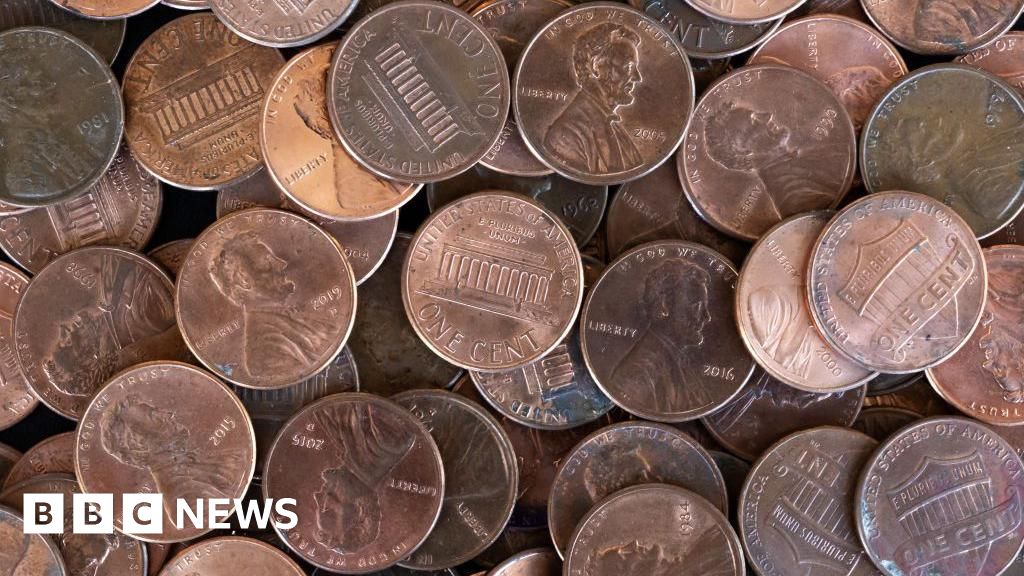US businesses are literally going penniless.
Since the Trump administration ended minting the one-cent coins earlier this year, those still in circulation are becoming harder to find. Many stores are now rounding their cash sales down to the nearest five cents, saying there are no federal guidelines on how to proceed.
“That adds up really quickly,” said Dylan Jeon, senior director of government relations with the National Retail Federation
In February, President Donald Trump said producing the coin was wasteful and too expensive and called on social media to “rip the waste out of our great nation’s budget, even if it’s a penny at a time”.
The US Mint officially stopped making pennies in May. The Treasury Department estimated shortages would start in early 2026, but they actually came much sooner. Banks can’t get pennies from the federal government, so businesses can’t get them from the banks.
“We first heard about the issue in late August, early September,” Mr Jeon said. “It’s really impacting any business that deals with cash payments.”
Now store clerks don’t know what to do when their tills are bare and someone needs change in pennies from a cash purchase.
The temporary solution for many, Mr Jeon said, is rounding the price of the sale up or down to the nearest five cents so the customer can use a nickel, the next lowest tender in the US.
But some cities, including New York, require retailers to give exact change and others don’t allow cash payments to differ from card payments for the same item, Mr Jeon said.
To avoid lawsuits and customer complaints, many retailers have chosen to just round down.
“You’re talking about losing up to four cents for every cash transaction across multiple stores across the country,” he said. “It’s unsustainable.”
Many stores are now urging customers to pay in exact change. Others are hosting promotions for customers to bring in extra pennies they have at home.
Convenience stores are some of the hardest hit by the shortage, said Jeff Lenard, a spokesperson for the National Association of Convenience Stores.
Convenience giant Kwik Trip has announced it is rounding down to the nickel, which it says will cost it up to $3m (£2.3m) this year.
American coins have been discontinued before, including the half-cent, three-cent and 20-cent pieces that were retired in the 1800s, Mr Lenard said. It’s been many years, though, since a staple like the penny – which entered ciruclation in 1793 – has ceased production.
“People don’t want the penny until they can’t get it back in change,” he said.
It costs nearly four cents to make a penny.
But keeping the zinc and copper coins in circulation will help lower-income Americans who primarily pay in cash, said Mark Weller, executive director of Americans for Common Cents.
“These are people that don’t have the access to checking accounts and charge cards and banking services,” he said. “You hurting lower-income groups when you start rounding transactions.”
He also thinks the government savings from not producing pennies will be offset by the need for more nickels, which are worth five cents but cost nearly 14 cents to make.
People watching the penny world believe there needs to be federal guidance for both businesses and shoppers on rounding, how to carry out transactions during the shortage, and generally what to do with the coins.
“There will always be pennies out there, it’s just such a low-utilisation coin,” said Mr Jeon. “People forget about them in their pockets, they lose them in their couch, they’re sitting in jars. Those are coins that aren’t making it into circulation.”
